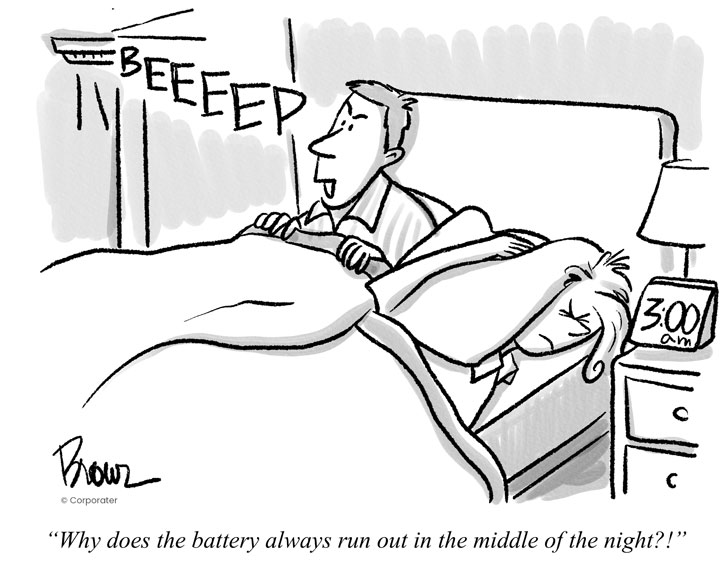
Has this ever happened to you? You’re lying in bed with your spouse or partner, sleeping peacefully when you’re awakened from your slumber by a beeping sound. It probably takes two or three beeps to register, then you’re both awake and irritated enough to realize it’s repeating in a pattern. Groggy as you are, you soon recognize the culprit: a smoke detector battery that needs — no, it demands — to be changed. Why do these things always decide to go off in the middle of the night?
After the inevitable waiting game, each of you hoping it might miraculously stop or that the other will take care of it, you give in, stumble out of bed, and go in search of the incessant beeping. As annoying as this is, it also provides a great example of a catalytic mechanism. The smoke detector going off forces you into action. There is really no alternative. You have to get out of your cozy bed and change the battery or suffer the severely negative consequences of being robbed of a good night’s sleep.
Of course, catalytic mechanisms don’t just apply to late-night battery changes. Best-selling business author Jim Collins, who originally wrote about this topic, believes they are crucial for any organization that wants to move beyond bureaucratic exercises in pursuit of their goals. He describes them as the crucial link between objectives and performance. They can take many forms, but the common denominator is a process or procedure that forces people to take direct action in pursuit of an important objective.
Collins cites the case of Granite Rock, a California company that supplies materials and products to the construction industry. When you think of a rock company (and really who isn’t constantly doing that) we doubt you conjure up images of world-class customer service. But service at a level exceeding what you might expect at Nordstrom, the American luxury department store chain, was exactly what the leaders of Granite Rock proposed to achieve. To do that they could have written vision statements, created an exciting communication campaign, or devised some complex service initiative, but in the end, they chose one simple process: short pay. At the bottom of every invoice the company issued there appeared a note reading: “If you are not satisfied for any reason, don’t pay us for it. Simply scratch out the line item, write a brief note about the problem, and return a copy of this invoice along with your check for the balance.” This is a truly catalytic mechanism. Any time a customer chooses not to pay the entire invoice amount it propels Granite Rock into action, digging deep to discover why the customer chose not to fully pay, and doing everything in their power to fix the problem to ensure it doesn’t happen again. Employees are provided with a crystal-clear signal that anything less than world-class service won’t be tolerated.
We have just one tip/question to offer you when it comes to catalytic mechanisms:
Which of your strategic objectives is so critical to your success that you should attach a catalytic mechanism to it in order to ensure you’ve fully committed to its achievement? Every objective is important or else it wouldn’t be on your radar. However, there is probably one, or maybe two, that rise above the rest, likely representing the clearest indication of your differentiating value proposition. Identify those and create catalytic mechanisms to demonstrate your true commitment. What process could you put in place that would force you to move beyond the corporate rhetoric and turn your dreams into reality?
It takes courage to initiate a catalytic mechanism because a well-constructed version will possess sharp teeth and produce legitimate consequences for the organization should they consistently fall short. The upside, however, is worth the risk. A catalytic mechanism has the power to motivate entire organizations, wow customers, and create sustainable results. What’s beeping in your world?

